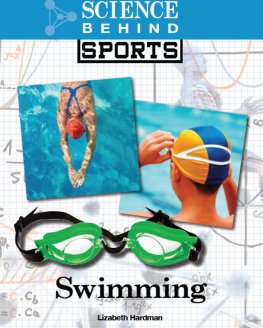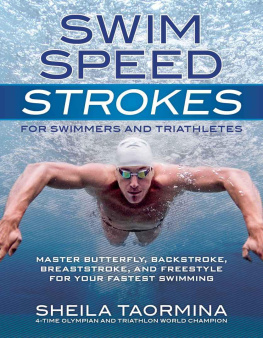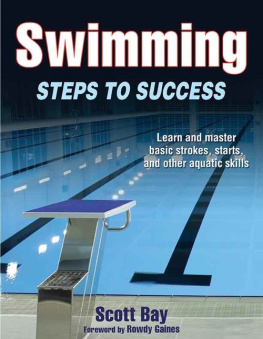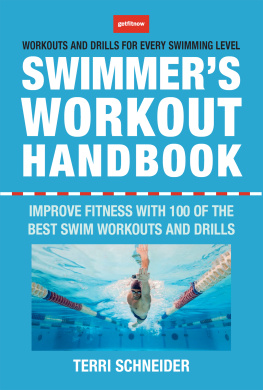To Travis, the light of my life
TMM
To my daughter, Tamara
KB

Copyright 2005 by McGraw-Hill Education. All rights reserved. Except as permitted under the United States Copyright Act of 1976, no part of this publication may be reproduced or distributed in any form or by any means, or stored in a database or retrieval system, without the prior written permission of the publisher.
ISBN: 978-0-07-182005-9
MHID: 0-07-182005-1
The material in this eBook also appears in the print version of this title: ISBN: 978-0-07-144730-0, MHID: 0-07-144730-X.
All trademarks are trademarks of their respective owners. Rather than put a trademark symbol after every occurrence of a trademarked name, we use names in an editorial fashion only, and to the benefit of the trademark owner, with no intention of infringement of the trademark. Where such designations appear in this book, they have been printed with initial caps.
McGraw-Hill Education eBooks are available at special quantity discounts to use as premiums and sales promotions, or for use in corporate training programs. To contact a representative please e-mail us at bulksales@mcgraw-hill.com.
Consult your physician or health care professional before beginning this, or any, exercise program. Not all exercise programs are suitable for everyone. Discontinue any exercise that causes you discomfort or pain and consult a medical expert. The instructions and advice presented in this book are in no way a substitute for medical counseling. The authors and publisher disclaim any liability arising directly or indirectly from the use of this book.
TERMS OF USE
This is a copyrighted work and McGraw-Hill Education and its licensors reserve all rights in and to the work. Use of this work is subject to these terms. Except as permitted under the Copyright Act of 1976 and the right to store and retrieve one copy of the work, you may not decompile, disassemble, reverse engineer, reproduce, modify, create derivative works based upon, transmit, distribute, disseminate, sell, publish or sublicense the work or any part of it without McGraw-Hill Educations prior consent. You may use the work for your own noncommercial and personal use; any other use of the work is strictly prohibited. Your right to use the work may be terminated if you fail to comply with these terms.
THE WORK IS PROVIDED AS IS. McGRAW-HILL EDUCATION AND ITS LICENSORS MAKE NO GUARANTEES OR WARRANTIES AS TO THE ACCURACY, ADEQUACY OR COMPLETENESS OF OR RESULTS TO BE OBTAINED FROM USING THE WORK, INCLUDING ANY INFORMATION THAT CAN BE ACCESSED THROUGH THE WORK VIA HYPERLINK OR OTHERWISE, AND EXPRESSLY DISCLAIM ANY WARRANTY, EXPRESS OR IMPLIED, INCLUDING BUT NOT LIMITED TO IMPLIED WARRANTIES OF MERCHANTABILITY OR FITNESS FOR A PARTICULAR PURPOSE. McGraw-Hill Education and its licensors do not warrant or guarantee that the functions contained in the work will meet your requirements or that its operation will be uninterrupted or error free. Neither McGraw-Hill Education nor its licensors shall be liable to you or anyone else for any inaccuracy, error or omission, regardless of cause, in the work or for any damages resulting therefrom. McGraw-Hill Education has no responsibility for the content of any information accessed through the work. Under no circumstances shall McGraw-Hill Education and/or its licensors be liable for any indirect, incidental, special, punitive, consequential or similar damages that result from the use of or inability to use the work, even if any of them has been advised of the possibility of such damages. This limitation of liability shall apply to any claim or cause whatsoever whether such claim or cause arises in contract, tort or otherwise.
CONTENTS
FOREWORD
BY RICHARD QUICK, COACH, STANFORD UNIVERSITY AND TEAM USA
CHAPTER 1
POOLS AND TOOLS OF THE TRADE
CHAPTER 2
FREESTYLE BASICS
CHAPTER 3
FREESTYLE STREAMLINING AND LAPS
CHAPTER 4
WORKOUTS TO IMPROVE DISTANCE AND CONDITIONING
CHAPTER 5
INTERVAL TRAINING: THE NEED FOR SPEED
CHAPTER 6
BACKSTROKE BASICS
CHAPTER 7
BREASTSTROKE BASICS
CHAPTER 8
BUTTERFLY BASICS
CHAPTER 9
TERMINOLOGY, TEAMS, AND SOURCES
CHAPTER 10
EXERCISES TO STRENGTHEN SWIMMING-SPECIFIC MUSCLES AND PREVENT INJURIES
CHAPTER 11
ADDITIONAL WORKOUTS
FOREWORD
T racey McFarlane Mirande is known as one of the finest breaststrokers in USA Swimming history. She was a 1988 Olympian in Seoul, Korea, and winner of the U.S. Olympic Trials in the 100- and 200-meter breaststroke.
I also know Tracey as a collegiate athlete who won many NCAA championships in breaststroke and participated in many NCAA championship medley relays while she was swimming for and I was coaching at the University of Texas. It was because of Traceys desire to do everything possible to help her college team be successful that I know she is highly qualified to write this book on improving swimming technique.
When Tracey came to the University of Texas, she was only a breaststroker without a third individual event to enter at the NCAAs. Her first year, we tried the 50-yard freestyle, but she did not qualify for the NCAA championships. Her sophomore year, we tried the 200-yard individual medley, but again she did not qualify for the championships. Her junior year, she qualified for the championships but did not score. However, her senior year, the Olympic year of 1988, she not only qualified in the 200 individual medley but also finished third.
There are several reasons that all of this is significant to her authoring this book. Tracey was not at all competitive in butterfly, backstroke, or freestyle in her freshman year because of her technique, but through being a student of the sport and determination, she became accomplished enough in all the strokes to put together a great individual medley. Also, the faster she became at the individual medley, the faster she was in her main stroke, the breaststroke, thus surprising the nation at the 1988 Olympic Trials with two wins and an American record in the 100. Tracey McFarlane Mirande was an astute student of swimming as an athlete and remains so as a coach and teacher. I know that her knowledge will help you become a better swimmer and enjoy it more.
Every successful swimmer works hard, but I am convinced that what separates the great swimmers from the successful is technique. An athlete can spend only a certain amount of time in the water and can become only so strong or powerful. Eventually the great athlete understands the limitations of time and volume of training and begins to value technique efficiency as a major weapon in the training regime. Keep in mind that the faster an athlete travels through the water, the greater the resistance, and, therefore, the more important the elimination of resistance becomes; that is a huge part of technique. Also, the more efficient an athlete becomes in the water, the faster the athlete can travel without overtaxing his or her physiology, leaving more energy to finish the race well or to devote to the next segment of the triathlon.
I encourage young swimmers to use Traceys book to work on all your strokes. Do not limit yourself to one stroke; the more you learn about all strokes, the more you will understand what makes your best stroke improve. And triathletes: work on backstroke as well as freestyle for muscle balance, improved kicking, and variety. The more you understand and develop backstroke, the more sensitive you will become to your freestyle weaknesses.










